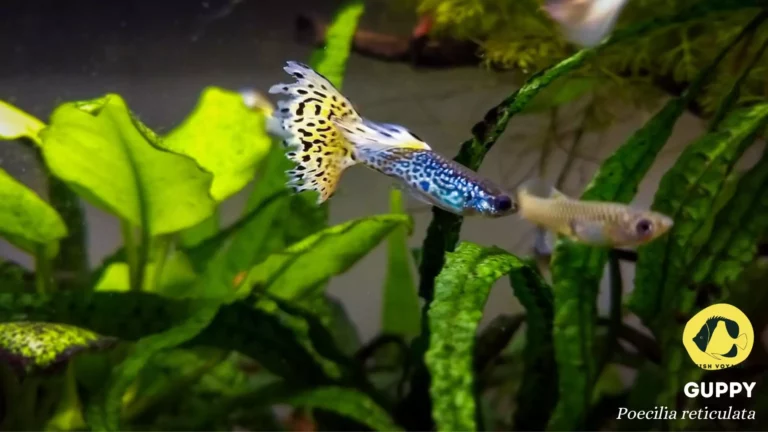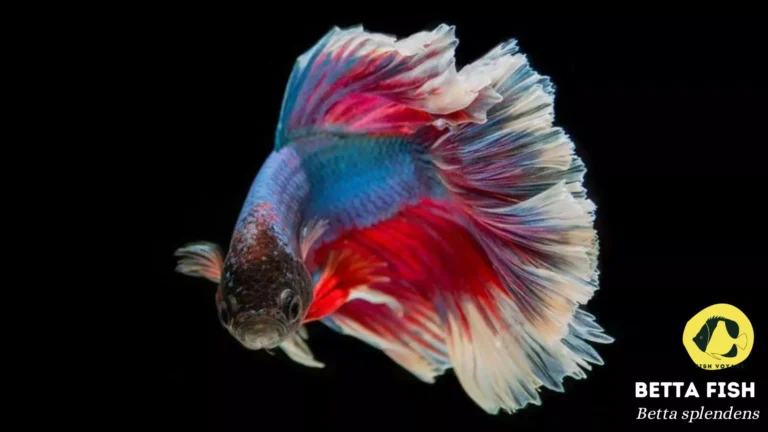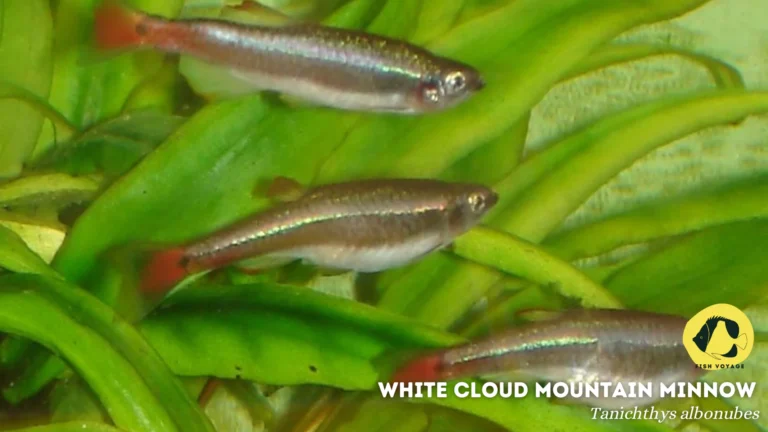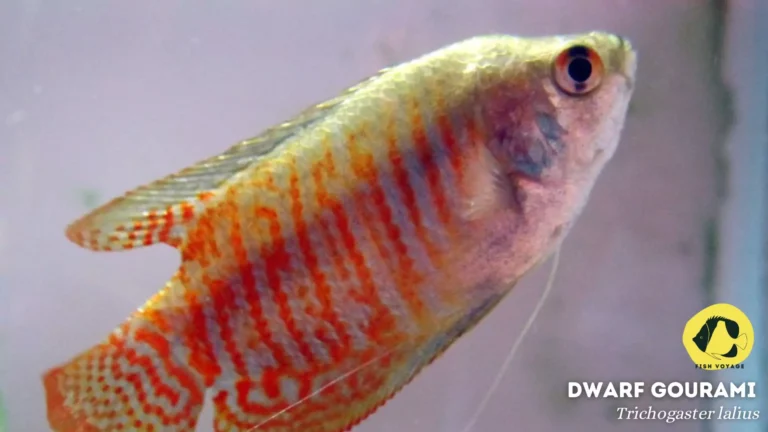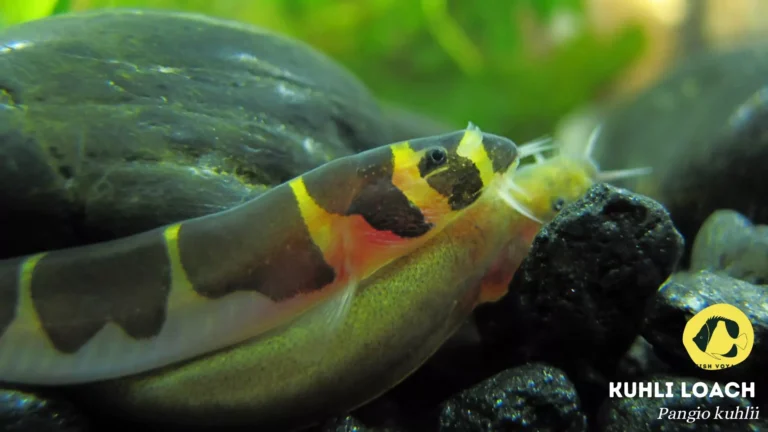Large Congo Tetra: Everything you need to know!
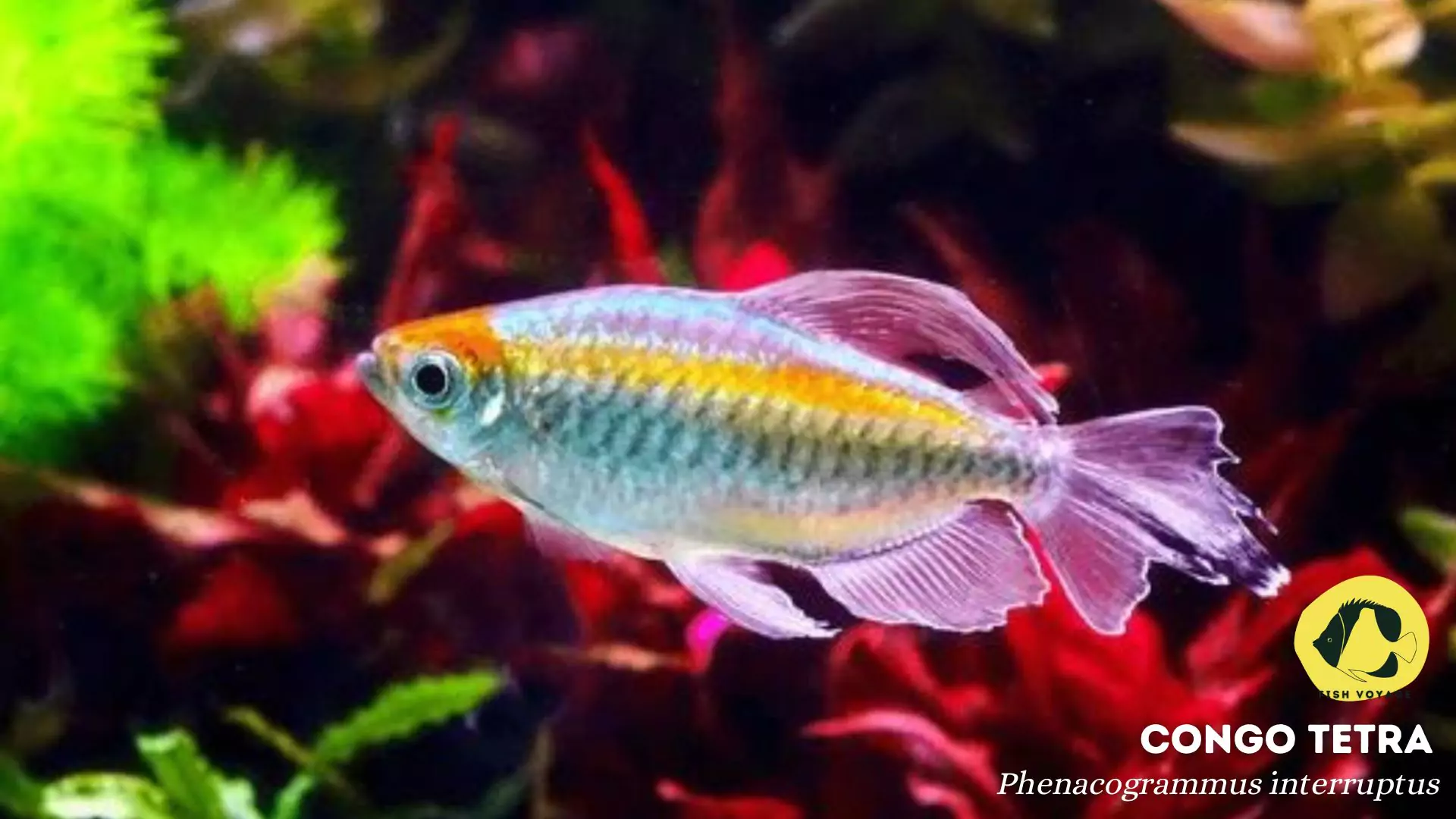
Welcome to the captivating world of aquarium enthusiasts, where the Large Congo Tetra emerges as a true gem among aquatic species. Renowned for its striking beauty and distinct charm, the Large Congo Tetra (Phenacogrammus interruptus) is a species that effortlessly captures the attention of hobbyists and aquarists alike. Its vibrant coloration, ranging from iridescent blues to fiery reds, creates a mesmerizing display as it gracefully navigates through the water. With a streamlined body and delicate fins, this tetra embodies elegance and grace, making it a sought-after addition to aquariums of all sizes. As we delve into the nuances of caring for the Large Congo Tetra, discover the secrets behind its unique characteristics that make it a standout choice for those seeking to elevate the aesthetics of their aquatic habitats.
Physical Characteristics
Size
The Large Congo Tetra, as its name suggests, boasts an impressive size that sets it apart in the aquarium world. Adults typically reach lengths of 3 to 4 inches, showcasing a substantial presence within the tank. This size, coupled with their vibrant colors, contributes to their visual impact and makes them a focal point in any aquatic setting.
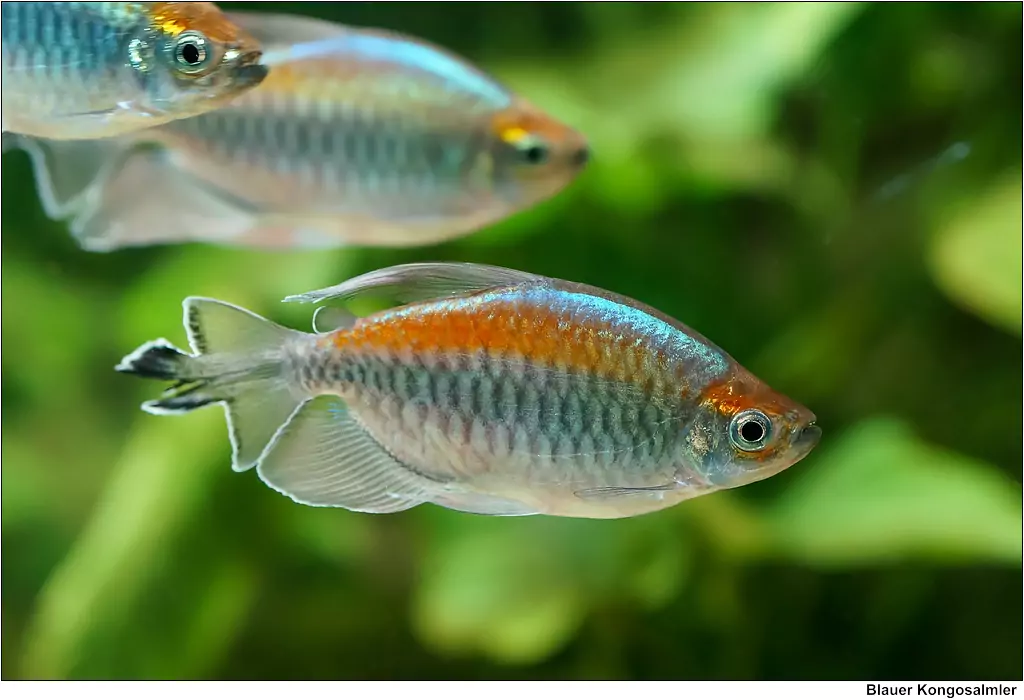
Coloration
One of the most alluring aspects of the Large Congo Tetra is its captivating coloration. Adorned with a shimmering blend of iridescent blues, fiery reds, and subtle hints of silver, these tetras create a living kaleidoscope within your aquarium. Their colors intensify during periods of excitement or courtship, providing a dynamic and visually stimulating experience for onlookers.
Distinctive Features
Beyond their size and color palette, Large Congo Tetras exhibit distinctive features that enhance their aesthetic appeal. With elongated, streamlined bodies and graceful, flowing fins, they navigate the water with elegance and poise. A distinguishing feature is the iridescent stripe that runs along their lateral line, catching and reflecting light to accentuate their beauty.
Notable Variations
While the standard coloration is awe-inspiring, it’s worth noting that variations exist within the Large Congo Tetra species. Some individuals may display subtle differences in color intensity or fin shape. These variations contribute to the uniqueness of each tetra, allowing enthusiasts to select specimens that align with their preferences and contribute to the diversity of their aquarium community.
As you explore the world of Large Congo Tetras, the combination of size, color, and distinctive features creates an aquatic spectacle that goes beyond the ordinary, offering enthusiasts a visually rewarding and dynamic addition to their underwater ecosystems.
Habitat and Natural Environment
Natural Habitat Overview
The Large Congo Tetra originates from the lush waters of the Congo River basin in Central Africa. In its natural habitat, these tetras inhabit slow-moving and densely vegetated waters, where they navigate through submerged vegetation and shaded areas. Understanding their origins is crucial for recreating a suitable environment within the confines of an aquarium.
Water Conditions
Large Congo Tetras thrive in conditions that mimic the soft, slightly acidic waters of their native environment. Aim for a pH range of 6.0 to 7.5 and maintain water hardness on the softer side. Consistent monitoring of these parameters ensures the well-being of these tetras and encourages natural behaviors, such as schooling and exploration.
Temperature Preferences
Replicating the warm tropical conditions of the Congo River, maintain a water temperature between 75°F to 82°F (24°C to 28°C). This temperature range encourages the metabolic activity of the tetras, promoting their overall health and vitality.
Environmental Factors
In their natural habitat, Large Congo Tetras benefit from a well-planted aquarium with ample hiding spaces and driftwood. Mimic the dappled sunlight effect by incorporating floating plants to provide shaded areas. As these tetras appreciate open spaces for swimming, strike a balance between vegetation and open water to create an environment that caters to their natural instincts.
Water Flow and Filtration
Large Congo Tetras prefer a gentle water flow, reflecting the conditions of slow-moving rivers. Consider incorporating a suitable filtration system that provides adequate water movement without causing excessive turbulence. This setup mirrors the tetras’ natural environment and ensures the water remains pristine.
Understanding and replicating the habitat and environmental conditions of the Large Congo Tetra is not only essential for their well-being but also enhances the overall aquarium experience, allowing enthusiasts to witness these captivating fish thrive in an environment reminiscent of their native home.
Tank Setup and Requirements
Ideal Tank Size
Providing an adequate living space is paramount for the well-being of Large Congo Tetras. Opt for a spacious aquarium with a minimum size of 30 gallons to accommodate their active nature and schooling behavior. Larger tanks, such as 55 gallons or more, are preferable, allowing these tetras to showcase their natural behaviors and minimizing territorial disputes.
Water Parameters
- pH Range: Maintain a slightly acidic to neutral pH level between 6.0 to 7.5 to replicate the soft waters of their native Congo River habitat.
- Water Hardness: Keep water hardness on the lower side, with a range of 5 to 12 dGH, ensuring optimal conditions for their health and vitality.
- Temperature: Set the aquarium temperature between 75°F to 82°F (24°C to 28°C), mirroring the warm tropical conditions of their native environment.
Filtration Recommendations
- Employ a reliable filtration system to ensure water quality remains pristine. Large Congo Tetras prefer a gentle water flow, so consider adjustable filters to control the intensity.
- Perform regular water changes to remove accumulated waste and maintain the overall health of the aquarium ecosystem.
Aquascape Considerations
- Incorporate live plants, driftwood, and rocks to replicate their natural habitat. Dense vegetation provides hiding spots and encourages natural behaviors.
- Strike a balance between open swimming areas and planted spaces to accommodate their schooling behavior and offer suitable exploration zones.

Lighting
- Provide subdued lighting to emulate the dappled sunlight effect found in their native waters. Floating plants contribute to shading, creating a visually appealing and comfortable environment.
Creating an aquarium environment that aligns with the specific needs of Large Congo Tetras not only enhances their well-being but also allows enthusiasts to observe these fascinating fish thriving in a setting reminiscent of their natural habitat. Attention to tank size, water parameters, and appropriate aquascaping ensures a harmonious and visually stunning aquatic display.
Feeding Habits
Dietary Preferences
Large Congo Tetras are omnivorous, showcasing a versatile palate that includes both plant matter and protein sources. In their natural habitat, they forage for small invertebrates, insects, and plant material. Replicating this varied diet in captivity is key to promoting their health and vibrancy.
Suitable Types of Food
- High-Quality Flake or Pellet Food: Choose a premium quality flake or pellet food designed for tropical freshwater fish. Ensure the formulation includes a balance of protein, vitamins, and minerals to meet the nutritional needs of Large Congo Tetras.
- Live and Frozen Foods: Supplement their diet with live or frozen foods such as brine shrimp, bloodworms, and daphnia. These protein-rich options mimic their natural prey and contribute to their overall well-being.
- Vegetable-Based Foods: Incorporate vegetable-based options such as spirulina flakes or blanched vegetables like spinach and cucumber to satisfy their herbivorous tendencies.

Feeding Schedule
- Feed them small, frequent meals throughout the day rather than a large single feeding. This approach aligns with their natural grazing behavior and prevents overfeeding, maintaining water quality.
- Consider a feeding schedule of 2-3 times a day, adjusting the quantity based on their response and the overall activity level in the aquarium.
Observation and Adjustments
- Monitor their behavior during feeding sessions. Large Congo Tetras are known for their enthusiastic feeding behavior, and observing their response helps tailor the diet to their preferences.
- Adjust the food types and quantities based on their growth, coloration, and overall health. A varied diet contributes to their optimal development and enhances their vibrant colors.
Special Considerations
- If keeping Large Congo Tetras in a community tank, ensure that all inhabitants receive appropriate nutrition. Some fish may have specific dietary needs, so choose food that benefits the entire aquarium ecosystem.
- Introduce occasional treats like live foods to stimulate natural hunting behaviors and provide enrichment.
By understanding the dietary preferences of Large Congo Tetras and offering a well-rounded and nutritious diet, aquarists can ensure the longevity, health, and vitality of these captivating fish within the aquarium setting.
Behavior and Compatibility
Social Nature and Schooling Behavior
Large Congo Tetras are renowned for their social nature and engaging schooling behavior. In their natural habitat, these tetras form tight-knit schools, displaying synchronized swimming patterns that captivate onlookers. Mimicking this behavior in the aquarium setting is essential for their well-being and helps reduce stress.
Intra-Species Interaction
- Large Congo Tetras thrive in the company of their own kind. Keeping them in a group of at least six individuals promotes a sense of security and encourages natural schooling behaviors.
- The interaction between individual tetras is marked by occasional displays of hierarchy, but overall, they coexist harmoniously within the school.
Compatibility with Other Fish
- Large Congo Tetras exhibit a peaceful temperament, making them compatible with a variety of community tank mates. Avoid aggressive or overly territorial species, as these can stress the tetras.
- Ideal tank mates include similarly sized and peaceful community fish, such as other tetra species, rasboras, and non-aggressive gouramis.
Considerations for Breeding
- During the breeding season, males may become more territorial and exhibit heightened aggression towards each other. It’s advisable to provide sufficient hiding places and maintain a balanced male-to-female ratio to mitigate potential conflicts.
Observation and Behavioral Cues
- Regularly observe the behavior of Large Congo Tetras to ensure they are displaying natural behaviors. A content and well-adjusted school will swim together, exhibit vibrant colors, and actively explore their environment.
- Should aggressive behavior or stress indicators be observed, consider adjusting the tank setup or reevaluating the composition of tank mates.
Unique Characteristics in Schools
- Each tetra in a school contributes to the collective beauty of the group, creating a dynamic and visually stunning display in the aquarium. Their coordinated movements and vibrant colors enhance the overall aesthetic of the tank.
Understanding the social dynamics and compatibility of Large Congo Tetras is crucial for creating a harmonious community tank. By selecting appropriate tank mates and providing an environment that supports their natural behaviors, aquarists can enjoy the captivating spectacle of these tetras thriving in a communal setting.
Breeding Information
Overview of Breeding Habits
- Large Congo Tetras exhibit fascinating breeding behaviors characterized by courtship displays and the formation of pairs within the school.
- Breeding typically occurs in the early morning, with males intensifying their vibrant colors and engaging in elaborate fin displays to attract females.
Courtship Rituals
- Males showcase their interest by pursuing females with darting movements and vibrant displays.
- Females respond by inspecting potential nesting sites, often choosing areas with fine-leaved plants.
Spawning Process
- Large Congo Tetras are egg scatterers, releasing adhesive eggs in small batches over vegetation or fine substrate.
- After spawning, adults may consume their own eggs, requiring careful consideration of tank conditions to ensure successful fry survival.
Tips for Creating a Conducive Breeding Environment
- Separate Breeding Tank: Set up a dedicated breeding tank with fine-leaved plants or spawning mops for egg attachment.
- Controlled Lighting: Provide a gradual increase in lighting intensity to mimic dawn, triggering the breeding process.
- Maintain Water Quality: Regular water changes and pristine conditions are crucial for successful breeding. Soft, slightly acidic water replicates their natural habitat.
Fry Care
- Once eggs are laid, transfer the adults back to the main tank to prevent egg consumption.
- Fry emerge within a few days, and their initial diet can include infusoria or specialized fry food. Gradually introduce finely crushed flakes as they grow.
Monitor Aggression
- Watch for potential aggression during breeding. If aggression arises, consider increasing hiding spaces or removing overly aggressive individuals.
Patience and Observation
- Successful breeding requires patience and keen observation. Allow natural behaviors to unfold while providing a secure and stress-free environment.
- Be prepared to intervene if any issues arise, such as the need to separate aggressive individuals or relocate fry to a dedicated fry tank.
Unlock the secrets of breeding Large Congo Tetras by incorporating these tips into your aquarist repertoire. Creating the right environment and understanding their courtship rituals contribute to a rewarding breeding experience.
Common Health Issues
Potential Health Issues and Diseases
- Ich (White Spot Disease): Large Congo Tetras, like many aquarium fish, are susceptible to Ich, a common parasitic infection. Symptoms include white spots on the skin, rapid gill movement, and lethargy.
- Fin Rot: Poor water conditions or injuries can lead to fin rot in Large Congo Tetras. This bacterial infection manifests as frayed or disintegrating fins.
- Internal Parasites: Internal parasites can affect the digestive system of tetras, leading to symptoms such as bloating, abnormal feces, and weight loss.
Preventive Measures
- Maintain Water Quality: Regular water changes and diligent monitoring of water parameters are fundamental in preventing a range of health issues. Clean, well-filtered water reduces stress and the likelihood of infections.
- Quarantine New Additions: Before introducing new fish to the aquarium, quarantine them for a few weeks. This precautionary measure helps prevent the introduction of diseases to an established community.
Observation and Early Detection
- Regularly observe the behavior, appearance, and feeding habits of Large Congo Tetras. Early detection of changes in behavior or physical appearance allows for prompt intervention.
- Isolate and treat affected fish promptly to prevent the spread of diseases within the aquarium.
Balanced Nutrition
- Providing a balanced and nutritious diet strengthens the immune system of Large Congo Tetras. A well-fed fish is better equipped to resist infections and recover from illnesses.
Quarantine Protocol
- When introducing new fish to the aquarium, implement a proper quarantine protocol. This involves isolating them in a separate tank for observation before introducing them to the main community.
- Quarantine tanks should mirror the conditions of the main aquarium, allowing for a smooth transition.
Consultation with an Aquatic Veterinarian
- In case of persistent or severe health issues, seek advice from an aquatic veterinarian. Professional guidance ensures accurate diagnosis and appropriate treatment.
Stress Reduction
- Minimize stressors such as sudden changes in water parameters, overcrowding, or aggressive tank mates. Stress weakens the immune system, making fish more susceptible to diseases.
By proactively addressing potential health issues, aquarists can ensure the well-being of their Large Congo Tetras and maintain a thriving and disease-free aquarium environment. Regular observation, preventive measures, and prompt intervention contribute to the overall health and longevity of these captivating fish.
Tips for Keeping Large Congo Tetras
Water Quality Maintenance
- Regular Water Changes: Conduct routine water changes to maintain optimal water quality. This helps remove accumulated toxins and ensures a healthy environment for Large Congo Tetras.
- Filtration System: Invest in a reliable filtration system suitable for the size of the aquarium. Adequate filtration promotes water clarity and reduces the risk of diseases.
Appropriate Tank Setup
- Provide Adequate Space: Large Congo Tetras thrive in spacious environments. Ensure the aquarium size accommodates their schooling behavior, allowing them to swim freely.
- Adequate Hiding Places: Incorporate plants, driftwood, and rocks to create hiding spots. This helps reduce stress and provides shelter during periods of rest.
Suitable Tank Mates
- Peaceful Community: Choose tank mates that share a peaceful temperament. Compatible species include other tetras, rasboras, and non-aggressive gouramis.
- Avoid Aggressive Species: Steer clear of aggressive or territorial fish that may stress the Large Congo Tetras.

Balanced Diet
- Variety in Feeding: Offer a varied diet that includes high-quality flakes, pellets, live or frozen foods, and vegetable-based options. A balanced diet contributes to their overall health and coloration.
- Avoid Overfeeding: Feed in small portions multiple times a day to prevent overfeeding. This helps maintain water quality and prevents digestive issues.
Behavioral Observation
- Monitor Schooling Behavior: Regularly observe the schooling behavior of Large Congo Tetras. If signs of stress or aggression arise, assess and adjust the tank setup or composition of tank mates accordingly.
- Individual Health Monitoring: Keep an eye on individual tetras for changes in behavior, color, or appetite. Early detection of issues allows for prompt intervention.
Quarantine New Additions
- Isolation Period: Quarantine new fish additions before introducing them to the main tank. This precautionary step prevents the spread of diseases and allows for observation.
Environmental Enrichment
- Variety in Aquascape: Create an engaging environment with a mix of open swimming areas and planted spaces. This encourages natural behaviors and provides environmental enrichment.
- Adjust Lighting: Implement a lighting schedule that mimics natural conditions, including periods of subdued light and darkness.
Professional Advice
- Consult Aquatic Veterinarian: In case of persistent health issues, seek professional advice from an aquatic veterinarian. Accurate diagnosis and appropriate treatment are crucial for maintaining fish health.
By incorporating these tips into your care routine, you can ensure a thriving and vibrant environment for your Large Congo Tetras. Regular attention to water quality, tank setup, and individual health monitoring contributes to the overall well-being and happiness of these captivating fish.
Conclusion
As we conclude our exploration of the captivating world of Large Congo Tetras, it’s evident that these fish bring a unique charm to the aquarium community. From their vibrant coloration and distinctive features to their engaging schooling behavior, Large Congo Tetras stand as a testament to the beauty of aquatic life.
Recap of Key Points
- Physical Marvels: Large Congo Tetras exhibit an impressive size, stunning coloration, and distinctive features that make them a focal point in any aquarium.
- Habitat Insights: Understanding their natural habitat helps recreate an environment that promotes their well-being, from water parameters to aquascape considerations.
- Feeding Dynamics: A varied and balanced diet contributes to their health, while regular observation allows for adjustments based on their preferences and needs.
- Social Harmony: Large Congo Tetras thrive in the company of their own kind and compatible tank mates, showcasing a peaceful demeanor and mesmerizing schooling behavior.
- Health Guidelines: Vigilant monitoring of water quality, preventive measures, and prompt intervention contribute to the overall health and vitality of these fish.
We invite you to share your experiences with Large Congo Tetras in the comments below. Whether you’re a seasoned enthusiast or just embarking on your aquarium journey, your insights and questions are valuable contributions to our community.
Remember, the world beneath the water’s surface is a dynamic and ever-evolving one. Let’s continue to share knowledge, experiences, and a passion for the aquatic realm. Thank you for joining us on this exploration of the Large Congo Tetra, and we look forward to hearing from you.
Additional Resources
As you embark on your journey of caring for and appreciating Large Congo Tetras, we recommend exploring additional resources that provide valuable insights and further expand your knowledge. Here are some reputable forums for engaging discussions and books for in-depth reading.
Forums for Discussion
- AquariumAdvice: Join a community of dedicated aquarium enthusiasts to share experiences, seek advice, and engage in discussions about Large Congo Tetras and other aquatic topics.
- Fishlore: A comprehensive forum covering various aspects of fishkeeping, offering a platform for questions, advice, and lively conversations.
Books for Further Reading
- The Complete Idiot’s Guide to Freshwater Aquariums by Mike Wickham: An excellent resource for both beginners and experienced aquarists, covering essential topics including fish selection, tank setup, and maintenance.
- Encyclopedia of Aquarium & Pond Fish by David Alderton: Dive into a comprehensive guide on various fish species, including the Large Congo Tetra, with detailed information on care, behavior, and compatibility.
Exploring these resources will not only enhance your understanding of Large Congo Tetras but also connect you with a broader community of aquarium enthusiasts. Remember to contribute your experiences and questions to these forums, fostering a collaborative environment that benefits everyone.
As you delve into the wealth of knowledge available, continue to learn, share, and appreciate the fascinating world of Large Congo Tetras. Happy fishkeeping!
Frequently Asked Questions (FAQs)
1. What is the ideal tank size for Large Congo Tetras?
The ideal tank size for Large Congo Tetras is a minimum of 30 gallons. However, larger tanks, such as 55 gallons or more, are recommended to provide ample space for their active schooling behavior and to accommodate their substantial size.
2. How can I replicate the natural habitat of Large Congo Tetras in my aquarium?
To replicate the natural habitat of Large Congo Tetras, include dense vegetation, driftwood, and rocks in your tank. Mimic the slow-moving waters of the Congo River basin and provide open swimming areas. Floating plants can create shaded spots, and a gentle water flow enhances the overall environment.
3. What is the recommended temperature range for Large Congo Tetras?
The recommended temperature range for Large Congo Tetras is between 75°F to 82°F (24°C to 28°C). Maintaining this tropical temperature range encourages their metabolic activity and overall well-being.
4. Can Large Congo Tetras coexist with other fish species?
Yes, Large Congo Tetras are known for their peaceful temperament. They can coexist harmoniously with other similarly sized and non-aggressive community fish, such as other tetras, rasboras, and peaceful gouramis.
5. How can I prevent common health issues in Large Congo Tetras?
Preventing common health issues in Large Congo Tetras involves maintaining excellent water quality through regular water changes and proper filtration. Quarantine new additions before introducing them to the main tank, provide a balanced diet, and monitor their behavior for early signs of stress or illness.

